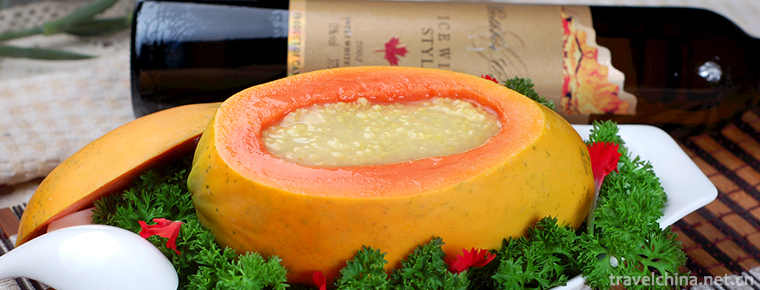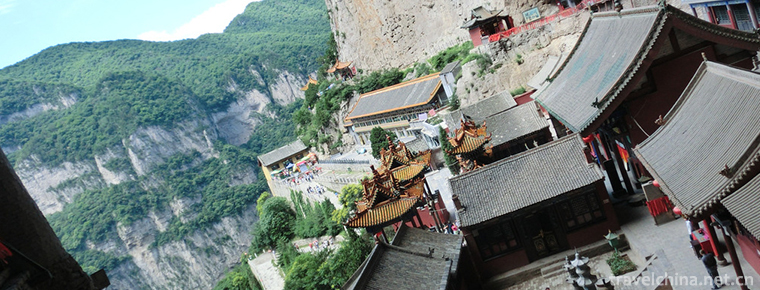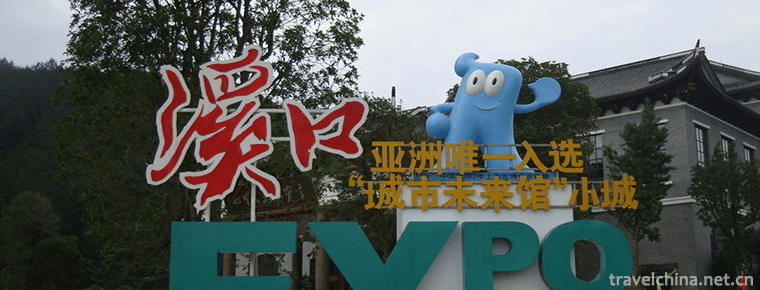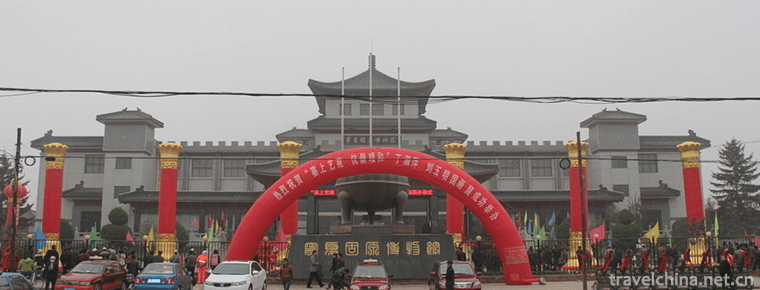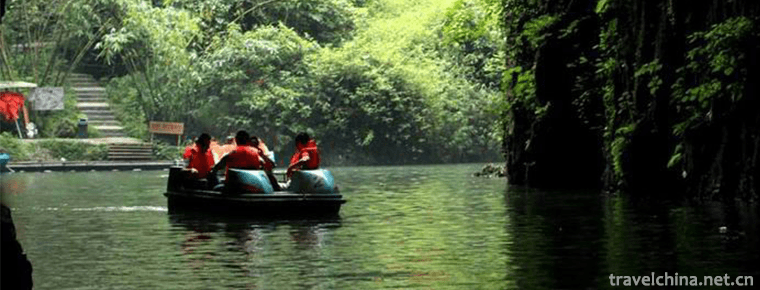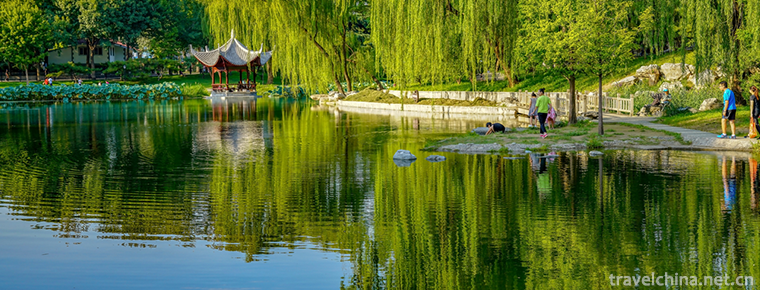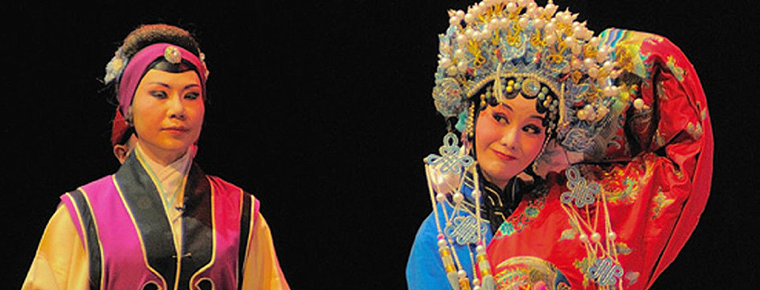Peacock Dance of Dai Nationality
Peacock Dance of Dai Nationality
Dai peacock dance is the most famous traditional performing dance in Dai folk dance in China. It is spread in Ruili, Luxi, Xishuangbanna, Mengding, Mengda, Jinggu, Cangyuan and other Dai inhabited areas in Dehong Dai Jingpo Autonomous Prefecture of Yunnan Province. Among them, the peacock dance in Ruili City, western Yunnan Province (Dai as "Galuoyong") is the most representative.
Legend has it that more than a thousand years ago Dai leaders summoned Ma Lijie to imitate the peacock's graceful posture and learn to dance. Later, through the processing and shaping of generations of folk artists, they passed down and formed peacock dance. On May 20, 2006, the Dai peacock dance was approved by the State Council and listed in the first batch of national intangible cultural heritage list.
historical origin
Peacock dance has a broad popularity and a long history. As early as more than a thousand years ago, there were many beautiful legends about peacock dance among the Dai people. One of them was the story of Zhaoshutun and Nanmunona. Peacock dances performed by the folk in the "rush to swing", festivals and various festive days are based on various legends. One of the legends says this:
Long, long ago, there was a poor Dai boy who fished under a hollow tree by the river every day in order to make a living, and he could catch a lot of fish every time. One day, however, he fished from morning till night and could not see a single fish. He felt very strange.
Just then, a light wind came and blew into the hollow tree behind him. There was a buzz. At this time, the ripening fruit trees along the river, also with the wind tinkling into the river, issued a crisp and pleasant sound. In that instant, he saw the reflection of the peacock on the hillside in the river. Seeing this, the young man looked back in surprise and saw a pair of green peacocks unfolding their beautiful feathers, dancing with the beautiful sound.
At that time, the young man could no longer restrain his excitement, he said aloud: "Ah! I've come to the place where the immortals live today! ___________ "So the young man threw down his fishing rod and ran back to the village in surprise. He told the villagers what he had seen vividly and vividly. After listening, the villagers were very surprised. They all hoped that they could see the moving scene with their own eyes. Later, the young man came to the riverside with many villagers, cut down the hollow tree, sawed it into a long drum, covered with a layer of scalper skin, hit it with his hands, and immediately issued a "beep-beep-beep" melodious sound. Then, the young man found the copper pot and the copper pot lid, so that other young people with the rhythm of beating righteously weave beating. Then, in the happy drum music, the young man imitated the peacock's every move and danced the peacock dance. At that time, the people who watched were fascinated by it and never tired of it. From then on, the villagers unanimously elected the young man to dance the peacock dance at the mass gathering of "rushing to swing".
In the days of "rushing to swing", the young man performed the peacock dance for the Dai family for the first time, artistically reproducing the image of peacock and winning the praise of the Dai family. Since then, this peacock dance accompanied by elephant drums and gongs has spread among the Dai people.
There are many folk versions of the legend of peacock dance. For example, there is a legend that says: It is said that in very ancient times, the peacock's feathers were not as colorful as they are now, nor did they have the beautiful "round-eyed" feathers. It is loved only because it is tame and meek. Once, when the local Hinayana religious festival celebrations were held, I heard that Buddha went down to this place for this purpose. In order to get the Buddha's light, the devout believers rushed to the temple and surrounded the Buddha. A male peacock perched on the remote Tianzhu Mountains rushed to the temple after learning the message of the Buddha's descent to earth. Unfortunately, it was too late to get close to the Buddha, and he was in a hurry to circle outside the crowd. When the peacock's pious heart was perceived by Buddha, it threw a beam of Buddha light on the peacock. Unfortunately, this magical light of Buddha falls on the tail of the peacock running back and forth, which makes the root feathers of the peacock's tail instantly adorned with the pattern of "round eyes" with gold rings, becoming what people see today. When Buddha left, he specifically told the peacock to see you next year at the "pendulum Para" festival. From then on, when "Putting Pala" Festival, Buddha Sakyamuni would sit on the throne of lotus flowers, accept people's worship, and watch peacock dance performed by peacocks coming from Tianzhu Mountain to Buddha. At the same time, the peacock will also show people the splendor of the feathers bestowed by Buddha. From then on, when religious festivals and festivals were celebrated, people performed traditional folk peacock dances in order to pray for Buddha and auspiciousness.
The traditional Peacock Dance used to be performed by men wearing golden helmet, masks and peacock wings with supporting shelves. It was accompanied by instruments such as foot drums, gongs and cymbals. Dance has strict formulas, among which there are rich and varied, implied hand shapes and various dancing postures such as jumping and turning. With the beautiful body shape of "three bends", peacocks are shaped to "peep in the woods", "walk in the woods", "drink spring and play" and "chase and play" and other natural scenes. Although the traditional peacock dance performed by men tends to be vigorous and tall with little feminine beauty, the fluent dance posture and the beautiful modeling of the peacock are often intoxicating to the viewers, ignoring the sex of the performers.
The important instrument accompanying Dai dance is "elephant foot drum". In Dai people, from children aged 3 or 4 to old people, there is no one who can't beat elephant foot drum. A high-level performer like a foot drum is not only a drummer, but also an excellent dancer.
Because the performance level of Dai dancers is closely related to the performance of drummers. Before dancing, dancers and musicians usually do not practice together, and rely entirely on their mutual feelings for tacit cooperation and performance. Because of their familiarity with dance, drummer musicians will choose and change the rhythm and speed of drums according to the level of dancers, so as to guide dancers to show their unique skills. On appropriate occasions, musicians will also participate in the dance, using their fingers, palms and fists, elbows, heads and feet to knock out all kinds of drumming skills that imitate various sounds of nature. If one hammer goes down, the length of drumming can unlock all the buckles of Chinese jackets, and then hit one hammer, and buckle all the buckles. Musicians sometimes dance while striking drums with their feet around 80 cm long. Their dancing posture is flexible, cheerful and jumpy, which is an excellent form for young men to show their personal inspiration level and skills.
Style and characteristics
Music
Ali Peacock Dance
Ali peacock dance originated in Pulan County and spread in Pulan and Shiquan River. This is a kind of folk dance danced by the local people during the festival, expressing people's yearning for and pursuit of a better future. Most of the jumps are in circle or semi-circle shape. There is no limit to the number of people. There is no accompaniment, but there is accompaniment. Peacock dance is monotonous, but it is a popular folk dance. The basic steps are "two steps, one step" and "small step". The movements of the upper body are more abundant, such as "double waving hands", "shaking shoulders", "double pronged waist", "peacock swabbing water" and so on. When dancing, there are lyrics. Dance and lyrics are very closely coordinated. Dancers perform various movements according to the meaning of the words, such as: How do they shake their heads when they sing to the peacock? Dancers put their hands on their waists to do "shake their heads from side to side"; how do peacocks fly? Dancers do "double waving" movements to indicate flight. One of the most characteristic movements is "peacock draws water". Action: Close the soles of your feet, land on the outside of your feet, open your knees outwards and squat down, tilt your upper body forward until you tap the wooden bowl on the ground with your mouth and slowly get up. The hands are always doing the flying action "double pendulum". It looks beautiful and distinctive.
Linzhi Peacock Dance
Linzhi Peacock Dance originated from Zhaxi around Dengxiang in Milin County, Linzhi District, and spread in Milin County and Zhaxi around Dengxiang. Linzhi peacock dance also has no accompaniment, and often sings and dances by itself. There are many forms, such as solo dance, double dance, triple dance and group dance, for both men and women. Group dancing is a large circle formation, basically dancing in situ, sometimes moving clockwise. Linzhi peacock dance is a kind of folk song and dance that local people dance during the Tibetan calendar year and other folk festivals. At that time, people gather together to drink, sing and dance "Chababo" (a kind of folk song and dance in Linzhi area), with peacock dance performances in the middle. The performance of peacock dance is self-entertaining. It also expresses people's yearning and pursuit for a better future. The movements of peacock dance are relatively simple, but the lyrics and dance movements are closely combined. When singing "Where do you come from peacocks, peacocks come from India in the East", dancers do "waistband hand" and then "double waving hand" to express flying. When it says, "Peacock, how do you draw water? When the peacock I draw water like this, the dancer will do the action of drawing water: standing on a small eight-word step, stretching out his hands behind obliquely, waving his wrists downward, indicating that he is flying, squatting, and then holding up the wooden bowl on the ground with his mouth. This action needs to be completed in the second beat, which is difficult. The basic steps and gestures of Peacock Dance include "step by step", "eight-character squat", "peacock draws water" and "peacock flies". Graceful movements and vivid images are popular folk songs and dances among local people.
Batang Peacock Dance
Local people call it "Macharatron". "Macha" is the peacock, and "Qutong" is to draw water, meaning that peacock draws water. The dance is mainly spread in Batang and Lhasa of Ganzi Tibetan Autonomous Prefecture, Sichuan Province. Peacock draws water only to dance during the festival. It is a typical folk song and dance in "Ba harmonic" (Batang string), and it is also the favorite song and dance of the local people. When jumping, it is big circle or semicircle, movable. There is no limit to the number of people, half of men and half women or mixed men and women, free to come and go, using the form of singing and dancing. There is no wooden bowl full of wine or water in the center of the circle. The lead dancer (male and female) dances around the wooden bowl, and everyone dances with the pianist. The lead dancer simulated the peacock according to the lyrics. Where do you come from, peacock? When it comes from India, the dancer takes a flying action, waving both hands. When you sing, "Peacock, what water do you drink? When drinking the cool spring water, the dancer takes the action of drawing water, that is, squatting on foot, stretching his arms behind obliquely to make backward opening and closing sleeves, and holding up the wooden bowl on the ground with his mouth and drinking up the wine. The basic steps and gestures of the peacock to draw water are "one step at a time", "one step at a time", "three steps at a time", "three steps at a time", "full squat on foot", "eight-character hand shake", "flag in the wind" and so on. Peacock draws water gracefully, gracefully, lightly and extensively, expressing people's good wishes for a better future.
Peacock Dance in Tibetan Opera
Tibetan opera, called "Aguiram" in Tibetan, is an ancient opera popular with Tibetans. It has a history of thousands of years. Tibetan opera generally belongs to the category of singing and dancing, which is a comprehensive art of expressing literary content in the form of singing and dancing. In addition to Tibet, it is also prevalent in Yunnan, Sichuan, Gansu and other Tibetan areas. Tibetan opera is a folk singing and dancing art with strong Tibetan characteristics, which originally developed from folk rap and singing. In the 14th century AD, it was well known that Zhuqin Tangdongjibu, a great man in Tibet, who was famous for building a cable bridge to benefit all living beings, inherited and developed it. Tibetan opera is divided into two types: orchid mask and white mask. White mask is known as "Zaxi Xieba". Tibetan opera performances are divided into three parts: the first opening part is called "Win Patton", which plays the role of introducing actors, attracting audiences and explaining the true drama, and preparing for the performance of the main opera. The second part of the main play is called "Xiong", which begins with Wemba's introduction of the plot and the role played by the actors in a slate-like way, and then performs formally. The third section, "Zaxi" is the end of the performance, and has nothing to do with the plot, but the blessing ceremony, accepting the audience's Hada and donations. Tibetan opera is based on folk tales, historical legends, Buddhist classics and human relations. The main repertoires are Princess Wencheng and Princess Nepal, King Northam, Suginima, Dun Yue Dun Zhu, Longsa Wenbo, Zhuo Wa Sam, Baimawenba and so on. In some Tibetan operas, there are dance segments of peacock dance, using peacock costumes to simulate peacock dance posture.
Peacock Dance in Qiang Mu
"Qiang Mu" means dancing or dancing. It is a religious dance art performed by Tibetan Buddhist monks during grand ceremonies held in their own monasteries. The scene is magnificent and magnificent. It integrates chanting, music and dancing. The main content is exorcism, Yingxiang, farewell to the old years. Each monastery determines one or several days as the date of performance according to the Tibetan calendar, and then for successive years. In addition, it is not allowed to perform at will. Most experts believe that the origin of Qiang Mu originated in the eighth century AD, but a few experts believe that it originated in the Ben religion period. There are different opinions, which need further research. The more fixed roles in Qiang Mu's performance program generally include gods, divine soldiers, demons, clowns, birds and animals. Peacock dancing in Qiang Mu can only be seen in Zashrunbu Monastery performing Semoqim. The basic movements include "moving flat step", "trotting", "shaking head from left to right", "stretching neck" and so on. Although there are not many movements, they are indispensable in Semoqim.
Artistic characteristics
Peacock dancing has no accompaniment of musical melody. Although accompaniment instruments only have percussion instruments such as foot drums, gongs and cymbals, they are not monotonous. The drums of elephant foot drums are extremely rich and the sound varies greatly. The performers usually choose a good drummer to accompany them. Only in this way can we play colorful and exciting drums. At the same time, it can flexibly and skillfully change drum points with the changes of dancing movements and moods of performers. Although the gongs arranged in order of size on the wooden shelves only play a single rhythm, they can also follow the rhythm of the dancers'dancing movements, but they can also be light, heavy, fast and slow with the changes of the mood and movements of the performers. The same is true of cymbals. When the three instruments of elephant drum, Gong and cymbal play harmoniously, they can strike the gentle Lyric drums and play the peacock dance of Jin Xishan dancing in the movie .
Strike out cheerful and bold drums and strong drums. The drumming stirred up the enthusiasm of the performers. At the same time, the performers'exquisite performing arts infected the drummers. When the performer jumps to the climax, the crowd is led by a person (a drummer or a young man in the audience) to cheer: "I - I" or "water - water". At this time, there is a jubilant scene of medium and short wave Baiying. Ruili Dai peacock dance mainly consists of single dance and double peacock dance. The majority of dancers are male. Peacock dance has a variety of hand movements and skills such as jumping and turning. Each joint of limbs and trunk should be re-patted downward flexion and extension, and the whole body should vibrate evenly to form a beautiful "three-way bend" dance posture. The dance vocabulary of peacock dance on shelf is particularly rich, such as "flying down the hill", "peeping in the forest", "walking in the forest", "shaking wings", "dotting water" and so on.
Regional differences
Peacock dance is widely distributed in three parts, the upper part of Ali, the central part of Wei Zang four wings, and the lower part of Dugansi Liugang, all of which have folk dances expressing peacocks. Due to the different geographical environment, customs and habits, the performance form, style characteristics, skill difficulty, lyrics and music style of peacock dance are also different. In order to illustrate the differences between Peacock dances in different places, this paper compares and studies several different peacock dances.
Inheritance status
In the early period of the Cultural Revolution, the black-line dictatorship of literature and art attacked most of the previous artistic achievements. Peacock dancing was also included. It was called the product of "seal, capital and repair". Dao Meilan, the representative figure at that time, was also decentralized. The once-famous dance associations and dance troupes were paralyzed.
After 1976, Peacock Dance gradually recovered. In 1979, in celebration of the 30th anniversary of the founding of New China, ethnic minority singing and dancing re-entered the stage. Peacock dancing won awards frequently in various dance competitions. Public performances came one after another. Even in national activities such as Leaders'visits, peacock dancing became an indispensable program.
Dao Meilan's Golden Peacock is a representative work of peacock dance in this period. Dao Meilan thinks in his memory that it not only shows the kindness and beauty of the Dai people, but also conveys the joy of the Dai people after they gained a new life from the persecution of the Gang of Four.
In 1980, "The Golden Peacock" won an excellent prize in the first national dance competition.
Daomeilan's Peacock Dance soon became popular. But a year later, in the second national dance competition, "The Spirit of the Bird" came out, and Yang Liping, a Bai girl, was awarded a double prize for composing and performing. At this time, the audience found that the dance had abandoned the Dai elements, which used to be used in the past, and it did not look authentic.
Inheritance significance
Peacock dance is light and graceful in style, delicate in emotional expression and graceful in dance. It is the crystallization of Dai people's wisdom and has high aesthetic value. It not only performs alone in the important and lively national festivals, but also often integrates in the collective dance "gaguang". Peacock dance has the significance of maintaining national unity, and its representativeness makes it the most culturally identifiable dance of the Dai people.
The state attaches great importance to the protection of intangible cultural heritage. On May 20, 2006, the Dai peacock dance was approved by the State Council and listed in the first batch of national intangible cultural heritage list.

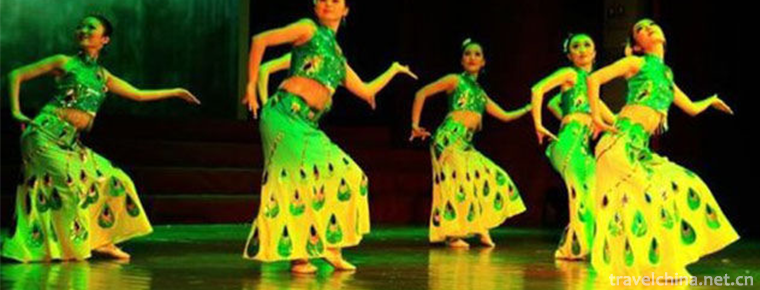
-
Pumpkin rice gruel
cut Pumpkin Peel into thin slices and rinse with millet. Put some water in the pot, put water into pumpkin millet and boil it in a big heat..
Views: 364 Time 2018-11-02 -
Mianshan Scenic Area
Mianshan Scenic Spot is a national AAAAA class tourist attraction, a key scenic spot in Shanxi Province, the birthplace of Ching Ming Festival (Cold Food Festival),.
Views: 298 Time 2018-11-24 -
Fenghua Xikou Tengtou Tourist Scenic Area
Fenghua District, Ningbo City, Zhejiang Province, is under the jurisdiction of the established towns, the first batch of famous national landscape tourism towns.
Views: 171 Time 2018-12-07 -
Guyuan Museum
Guyuan Museum of Ningxia was established on December 30, 1983. It belongs to the Cultural Office of Ningxia Autonomous Region. It is located at No. 133 Xicheng Road, Guyuan City, southern mountain are.
Views: 192 Time 2019-01-12 -
Shimen Xianhu Scenic Area
Shimen Xianhu Scenic Area is the first national 3A-level tourist scenic spot in Rongan County, located in Liuzhou, Guangxi. It has high Gorges out of Pinghu Lake.
Views: 117 Time 2019-02-08 -
Taoranting Park
Taoranting Park, located on the northwest side of Taoranqiao in the South Second Ring of Beijing, is a new modern urban garden, which integrates ancient and modern gardening arts and focuses on highli.
Views: 130 Time 2019-02-13 -
Iron Man Wang Jinxi Memorial
The Iron Man Wang Jinxi Memorial Hall was built in 1971 to commemorate the pioneer fighter of the Chinese working class, the Iron Man Wang Jinxi. The Ironman Memorial Hall.
Views: 183 Time 2019-02-22 -
Chu opera
Chu Opera, a local traditional drama in Hubei Province, is one of the national intangible cultural heritage..
Views: 194 Time 2019-04-18 -
Yi Peoples Cigarette Box Dance
Yi cigarette box dance, the traditional dance of Hani Yi Autonomous Prefecture in Honghe, Yunnan Province, is one of the national intangible cultural heritage..
Views: 161 Time 2019-07-12 -
Zao Bang
Zaobao is one of the traditional local operas in Shandong Province. It is mainly popular in Heze, Yuncheng, Liangshan, Juye, Juye, Juancheng and Dingtao. It developed under the influence of local lang.
Views: 235 Time 2019-07-16 -
Guiyuanlin Zhangba Luzhou
Longan forest in Zhangba, Luzhou is a genetic Bank of Longan Germplasm in inland China. As the most concentrated longan plantation with a history of more than 100 years, it is as valuable as giant panda in zoology..
Views: 177 Time 2020-10-16 -
Suining famous specialty
Suining City has Shehong Medina beef, Daying white lemon, Chuanshan bean curd peel, Anju golden pear, zhuotang well salt, da'anshu beef, Chicheng lake fish mat, shehongyexiang pig, Anju 524 sweet potato, Pengxi green pepper, Pengxi Xiantao, qiaoguanying .
Views: 331 Time 2020-12-16
